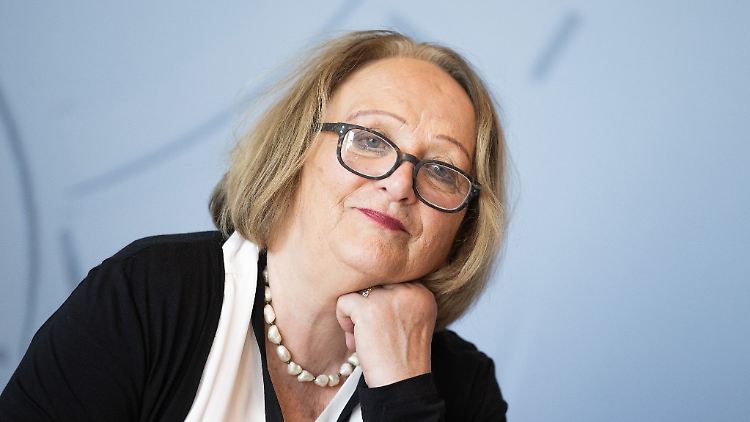Gamification and AI
Holocaust remembrance must move with the times
A guest article by Sabine Leutheusser-Schnarrenberger
January 27, 2024, 10:57 a.m
The victims of the Holocaust who are still alive today are on average 86 years old. Conversations with them as a form of remembrance culture will soon no longer exist. New ways are needed – where young people are: in games, on the internet, in social media.
There are only 14,200 Holocaust survivors left in Germany today. As children and young people, they were witnesses and victims of the darkest chapter in human history: the systematic murder of more than six million Jews. The parents, siblings and friends of the survivors were murdered in the gas chambers of German extermination camps. They became victims of a centuries-old mania for extermination against Jews, which culminated in the Shoah. In the Auschwitz-Birkenau concentration camp alone, more than a million people were killed before it was liberated by Red Army soldiers on January 27, 1945.
The numbers, data and statistics about the Holocaust are well known. They are taught in German schools, quoted in media reports and processed artistically. So why is it so important that this terrible crime is remembered again 79 years later on the International Day of Remembrance of the Victims of the Holocaust?
Because the 14,200 Holocaust survivors and all Jews in Germany are currently experiencing how anti-Semitism is once again booming in our country. Since Hamas’ pogrom against the Israeli population on October 7 last year, attacks on Jews and Jewish institutions have increased dramatically. The historical revisionist AfD receives approval ratings of more than twenty percent in the relevant surveys. And even in a supposedly liberal environment like at German universities, Jewish students must once again be afraid to openly profess their faith.
Gamification and artificial intelligence

Sabine Leutheusser-Schnarrenberger is a former Federal Minister of Justice, anti-Semitism commissioner for the state of North Rhine-Westphalia and deputy chairwoman of the Friedrich Naumann Foundation.
(Photo: Rolf Vennenbernd/dpa/archive image)
Anti-Semitism has never gone away and has always been deadly, as the attack on a synagogue in Halle on Yom Kippur 2019 showed. Last year, however, it became clear once again how alarmingly large the extent of anti-Semitic thought patterns still are in all areas of our society. This is sad and shameful. It also shows that the fight against anti-Semitism is not as successful as is often assumed. We have no reason to sit back and be satisfied. On the contrary: recent developments show that we need to take new paths in the fight against anti-Semitism.
Dealing with anti-Semitism is closely related to conveying historical lessons and experiences. Only those who try to understand the past will draw conclusions for the present and future. It is therefore frightening how patchy knowledge of the Holocaust is, according to studies, especially among younger people in the Millennials and Generation Z. If we do not address these target groups more closely, the culture of remembrance will continue to fade.
One of the most effective measures to promote a culture of remembrance has always been conversations with Holocaust survivors in German schools. All over the country they discuss with young people their experiences of National Socialism and hateful, racist anti-Semitism. The personal reports of contemporary witnesses create approachable and emotional moments. But given the average age of the remaining survivors, 86, such events will become increasingly rare and eventually end. Since the lessons of the past can be conveyed more impressively through lively stories than through dry history books, one of the most successful means of educating people about anti-Semitism and its consequences will no longer be available in the future. Our collective memory is losing an irreplaceable value of personal testimonies that keep alive the awareness of the horrors of the Holocaust.
Organizations like the Shoah Foundation therefore work tirelessly to record as many conversations with Holocaust survivors as possible in order to preserve their memories for posterity. Museums and research institutions, stumbling blocks, dialogue events, visits to memorial sites, books and films will continue to play an important role in conveying memories. But these classic means should be supplemented more to counteract the loss of authentic reports and knowledge about the Holocaust. To do this, we have to reach young people where they are: in games, on the internet, on social media. Gamification and artificial intelligence should be increasingly used in the culture of remembrance.
Remembrance culture must move with the times
There are already initial successful approaches. In “The Light in the Darkness” by British game developer Luc Bernard, the player experiences how a Jewish family in Paris in 1940 is exposed to increasing discrimination and persecution – until the family members are finally deported one by one. Bernard, who produced the game on his own for fifteen years without outside financing, is also responsible for the development of the digital Holocaust museum in the globally successful video game Fortnite. A team of Israeli and German developers and players is working on making the Yad Vashem Holocaust memorial true to the original in the world of the hugely popular game Minecraft. In Germany, too, there are some tentative attempts to approach the subject of the Holocaust and National Socialism outside of the usual world war simulations, for example with “The Darkest Files”.
Using artificial intelligence to preserve memories can also be useful. Individual projects, mainly in Israel and the USA, record interviews with Holocaust survivors in order to use this data – based on over 2,000 questions asked – for virtual conversations with the computer-simulated images of the survivors.
Of course, the sound of artificial intelligence and gamification in connection with the Holocaust and the culture of remembrance sets alarm bells ringing for critical observers. Dealing with the culture of remembrance, especially in connection with the Holocaust, always raises ethical questions. These must be discussed intensively – but they must not limit the view that the culture of remembrance must also move with the times in order to be effective and fulfill its goal: to raise awareness of the horrors of the Holocaust and to ensure that such Crimes never happen again.
A culture of remembrance must be lived and experienced. Computer games offer good conditions for this. They are the most used entertainment medium among young people. The fear of a PR fiasco often blocks bold initiatives and creative ideas. But we have to take this risk. Dwindling knowledge about the Holocaust poses much more serious risks for our society.
